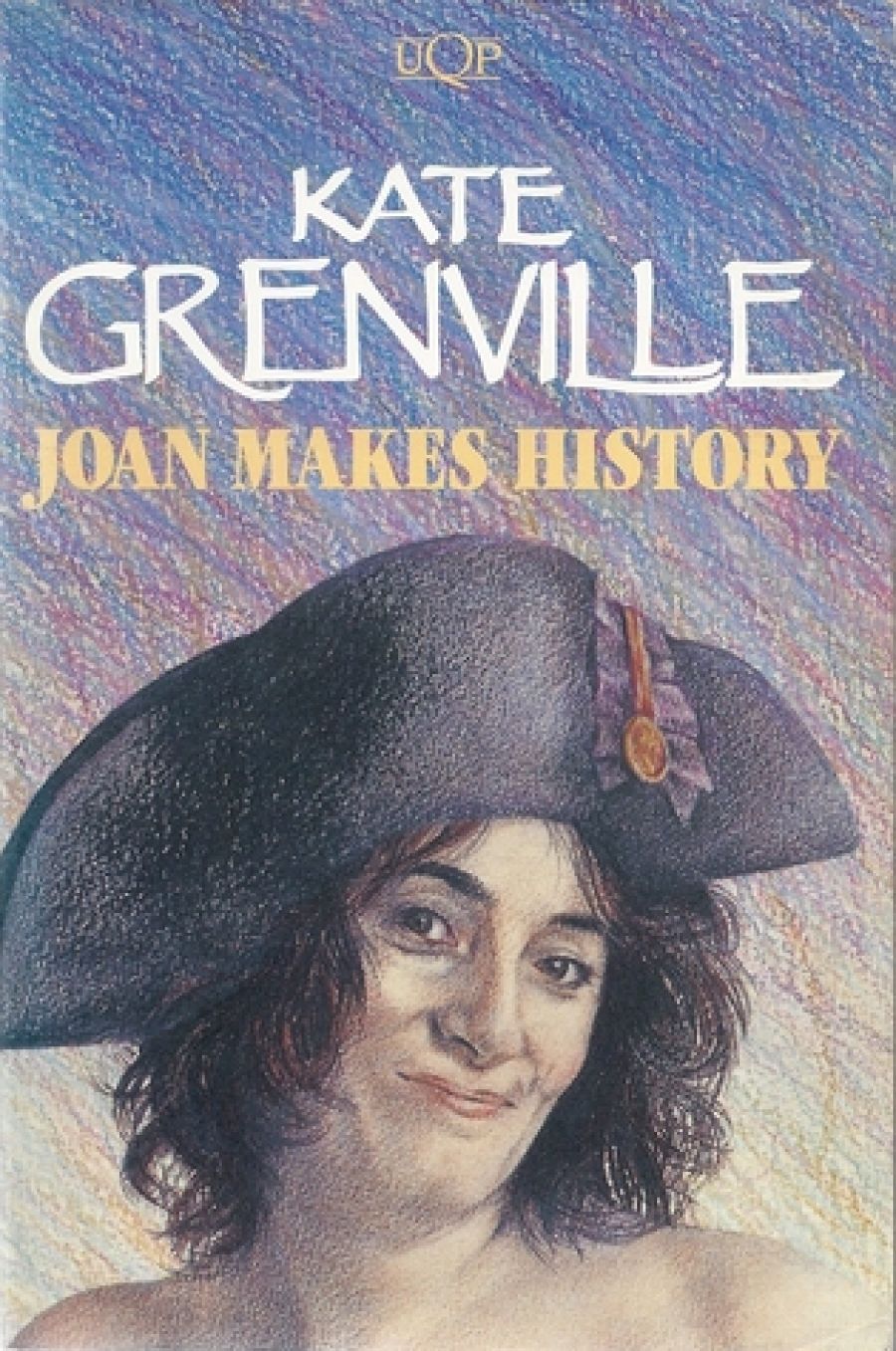
- Free Article: No
- Contents Category: Fiction
- Review Article: Yes
- Online Only: No
- Custom Highlight Text:
Soul-searching about our past is the new literary fashion. It is the period in which the breast-beaters, the moral Pharisees, are driven to tell us how, unlike their predecessors, they have political and moral virtue. The Aborigines, women and ordinary people have become the ‘goodies’, and all those who ignored them in their books or their teaching have become the ‘baddies’. The winds of change are blowing over the ancient continent.
- Book 1 Title: Joan Makes History
- Book 1 Biblio: University of Queensland Press, 285 pp, $29.95 hb
So when she sets out in this novel to tell us about the role of women in Australian history she does it in a most imaginative way. She tells two stories: the story of her fictitious Joan in the present, and the story of her other Joan, the woman who played a creative role at all the decisive moments of our history, from the time when James Cook first saw the east coast of New Holland almost down to the age of the pill and the computer and the word processor.
The first story begins with Joan’s conception. On this, Kate Grenville is less whimsical than Laurence Sterne’s Tristram Shandy, who wished that his parents had ‘minded what they were about when they begot me’. Nor is she as magisterial in her melancholy as Alfred Housman in his austere couplet:
The night my father got me
His mind was not on me.
Kate Grenville gives a no-nonsense account of Joan’s conception. The ‘deed of darkness’ was performed in the bright light of the sun.
Joan’s life is a pilgrimage, not so much for the means of grace, as rather for a faith by which she can live. Kate Grenville takes the reader briskly, beautifully, through the early years. There is the discovery of the body and its hungers. There are the early fumbles with another girl. There is satisfaction of a kind with a man. But Joan wants more than the role of ministering to the delights of a hungry male. She does not want to be dominated. She wants freedom.
There are twists to the story. Nature has been slightly unkind. Joan does not have a pretty face. She is also a concealer. Nature has left her with a flat chest. Joan is too honest to ‘fill out with cotton what God had forgotten’. She faces the truth about herself
Joan finds her faith. Women are, she believes, the makers of history. ‘Long after I am dirt,’ she writes in the autumn of her life, ‘there will be such people screeching, singing and sneezing away, and I will always be a part of them ... generations of women and men lived and died, and like them all I, Joan, have made history’. Recognition brings acceptance and resignation and an end of striving, but at least one possible answer to what she and all women have lived through. That part of the story is told with wit and verve. Joan is no hater; she is a lover and a believer.
The other part of the book is written with the same gusto, the same eye for the quaint, for all those things in life which at least give us a chance to know what Louis Armstrong meant when he sing the words: ‘Cos I’m glad I’m livin’, Take these troubles all with a smile’. Joan was always there, as men in the days of their great arrogance used to boast, ‘when the whips started cracking’.
She was there when Captain Cook saw smoke and knew the land was inhabited. She was there when the convict women came ashore at Farm Cove and joined with the men in the first but not the last white man’s orgy. She was there when the white men pioneered civilisation in the bush; when white men, carried away by the ‘unholy hunger’ dug up the earth of Australia looking for gold. She was there when Ned Kelly made his doomed stand for a different sort of Australia.
She was there when, in the 1880s and 1890s artists put the beauty they had detected in the Australian bush on to canvas. One of the many delights of the historical section of the work is Joan’s joy in being the model for the woman in Frederick McCubbin’s work ‘The Pioneers’. Joan is everywoman, and everywoman is a life-affirmer and a source of life.
Kate Grenville is just as romantic about the role of woman as Karl Marx was about the role of the working classes in history. She is just as illuminating. For in the same way as some historians, often as short of ideas as a frog is of feathers, turn to Marx for ideas with which to dignify their work with some higher meaning, so I suspect that future historians in Australia will look to Kate Grenville for inspiration and ideas. They will not be disappointed.
This book can be read as a jeu d’esprit. As such it is a good read. There is more to it than that. It is a lively, witty, very wise look at the role of women in our society. The angry women may feel they have been betrayed, and the men who have not read the signs of the times may feel they have been traduced. But Clio, the muse of History, will welcome Kate Grenville into the temple of the Muses. For by a stretch of the imagination she has done what Hesiod told us historians and writers should all try to do: she has told us how our world came to be. Mr and Ms Dry-as-Dust can now fill in the details.


Comments powered by CComment